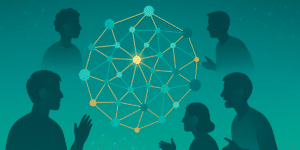In the interconnected world of today, understanding the intricate web of relationships that tie individuals, organizations, and systems together is more crucial than ever. Social Network Analysis (SNA) emerges as a powerful tool to decipher these connections, offering insights into the dynamics of social structures, information flow, and influence patterns.
SNA, at its core, is a methodological approach to analyzing the social connections among entities, identifying how these relationships influence behaviors, decisions, and outcomes. By mapping out and analyzing the networks of relationships, SNA provides a visual and quantitative analysis of social structures.
Table of Contents
Ego Network Analysis
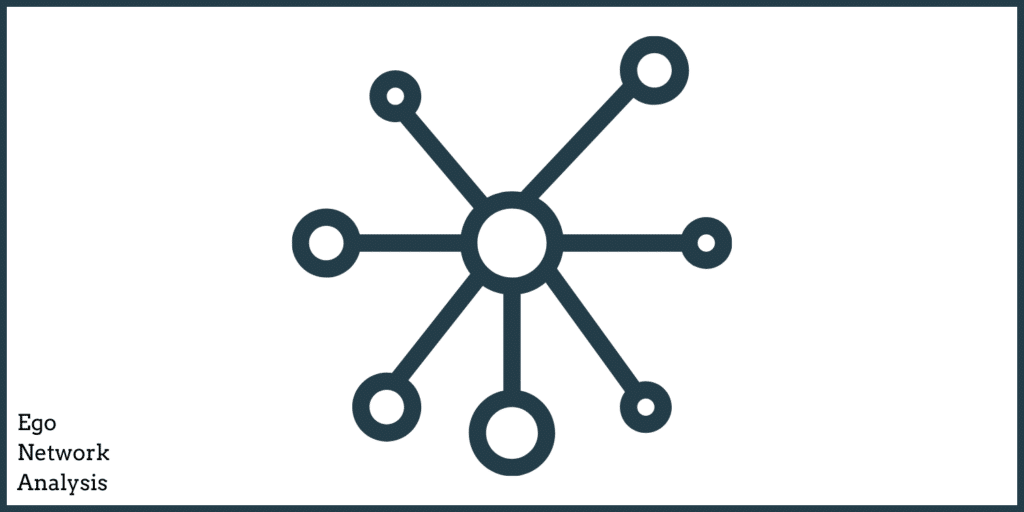
At one end of the spectrum of SNA is the Egocentric, or Ego Network Analysis. This approach zooms in on the individual level, focusing on a single node, known as the ‘ego,’ and its direct (and sometimes indirect) ties to other nodes, referred to as ‘alters.’ Ego Network Analysis is particularly interested in the quality, strength, and diversity of these ties, examining how they contribute to the ego’s access to resources, information, and support.
Ego networks are characterized by their emphasis on the individual within their immediate social context. This perspective is invaluable for understanding personal networks’ role in influencing individual behavior, spreading information, and facilitating or hindering opportunities. Ego Network Analysis can reveal, for instance, how an individual’s position in their network can affect their career advancement, mental health, or the adoption of new behaviors and technologies.
Applications of Ego Network Analysis span various fields, from public health, where researchers study how personal networks affect health behaviors and outcomes, to marketing, where understanding an influencer’s immediate network can optimize targeted advertising strategies.
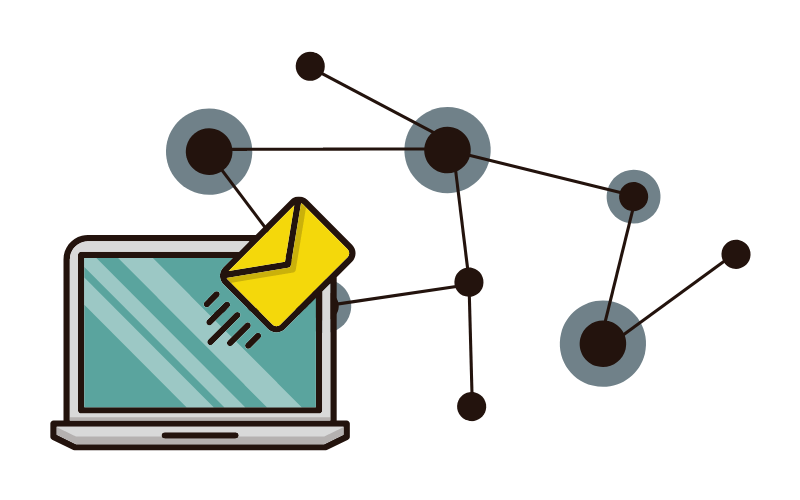
Get our monthly newsletter with resources for cross-sector collaboration, VNL recommended reading, and upcoming opportunities for engaged in the “network way of working.”
Whole Network Analysis
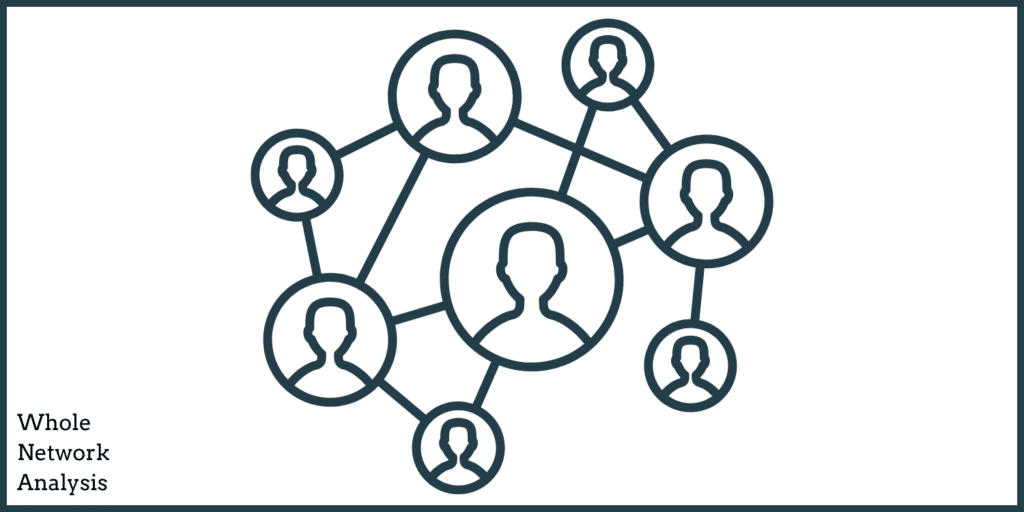
Conversely, Whole Network Analysis adopts a bird’s-eye view, examining all the nodes and their connections within a defined boundary. This approach seeks to understand the overall structure and patterns of relationships in a network, exploring concepts such as network density (how connected the network is), centrality (which nodes are most central), and subgroups or communities within the network.
Whole Network Analysis is key to identifying influential nodes, understanding how information or behaviors spread across a network, and determining how cohesive or fragmented a network is. This approach is particularly useful for organizational analysis, where understanding the flow of communication and collaboration can highlight areas for improvement or identify key influencers driving company culture.
For instance, in organizational settings, Whole Network Analysis can uncover silos within companies that may hinder communication and collaboration. In epidemiology, it can track how diseases spread through social connections, informing more effective containment strategies.
Comparing & Contrasting the 2 Types of Social Network Analysis
While both Ego and Whole Network Analysis are under the umbrella of SNA, they serve different purposes and offer distinct insights. Ego Network Analysis provides depth, focusing on the quality and implications of an individual’s immediate social connections. It offers a detailed look at how individual positions within their personal network can impact their access to resources, influence, and support.
Whole Network Analysis, on the other hand, offers breadth. It provides a comprehensive overview of the structure and dynamics of the entire network, identifying key players, subgroups, and overall patterns of interaction. This approach is invaluable for understanding the macro-level dynamics of social structures, including organizational, community, or societal networks.
The choice between Ego and Whole Network Analysis depends on the research question at hand. Ego Network Analysis is the method of choice when the focus is on the individual’s role within their network and the direct impact of their connections. Whole Network Analysis is preferred when the interest lies in the broader network dynamics, structural patterns, and the interactions among all nodes within a system.
Applications & Implications
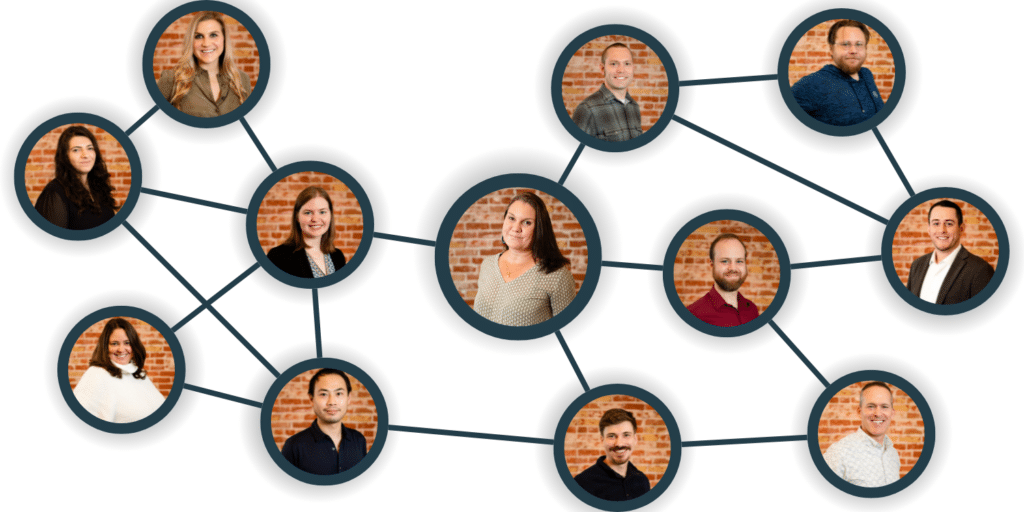
The applications of SNA, whether through Ego or Whole Network Analysis, are vast and varied. In public health, SNA can inform interventions by identifying key individuals or groups for disseminating health information or interventions. In the corporate world, it can optimize organizational structures, improve communication flows, and enhance collaboration. In the social sciences, it provides insights into social capital, influence, and power dynamics.
Moreover, the rise of digital social networks has expanded the relevance and applications of SNA. Online social network platforms are rich datasets for analyzing social connections, influence patterns, and information dissemination, offering unprecedented opportunities for both Ego and Whole Network Analyses.
Use Both Types of SNA with PARTNER CPRM
At VNL, we create tools and technology to harness SNA and strengthen social connectedness. Our leading SNA platform, PARTNER CPRM, includes tools for mapping networks using ego or whole network analysis and can help you strengthen your cross-sector partnerships using a network science-informed strategy.
The Member Profile below shows an organization’s ego network on the left, with the whole network on the right, so you can explore your connections from the bottom up for top-down perspective at the same time.
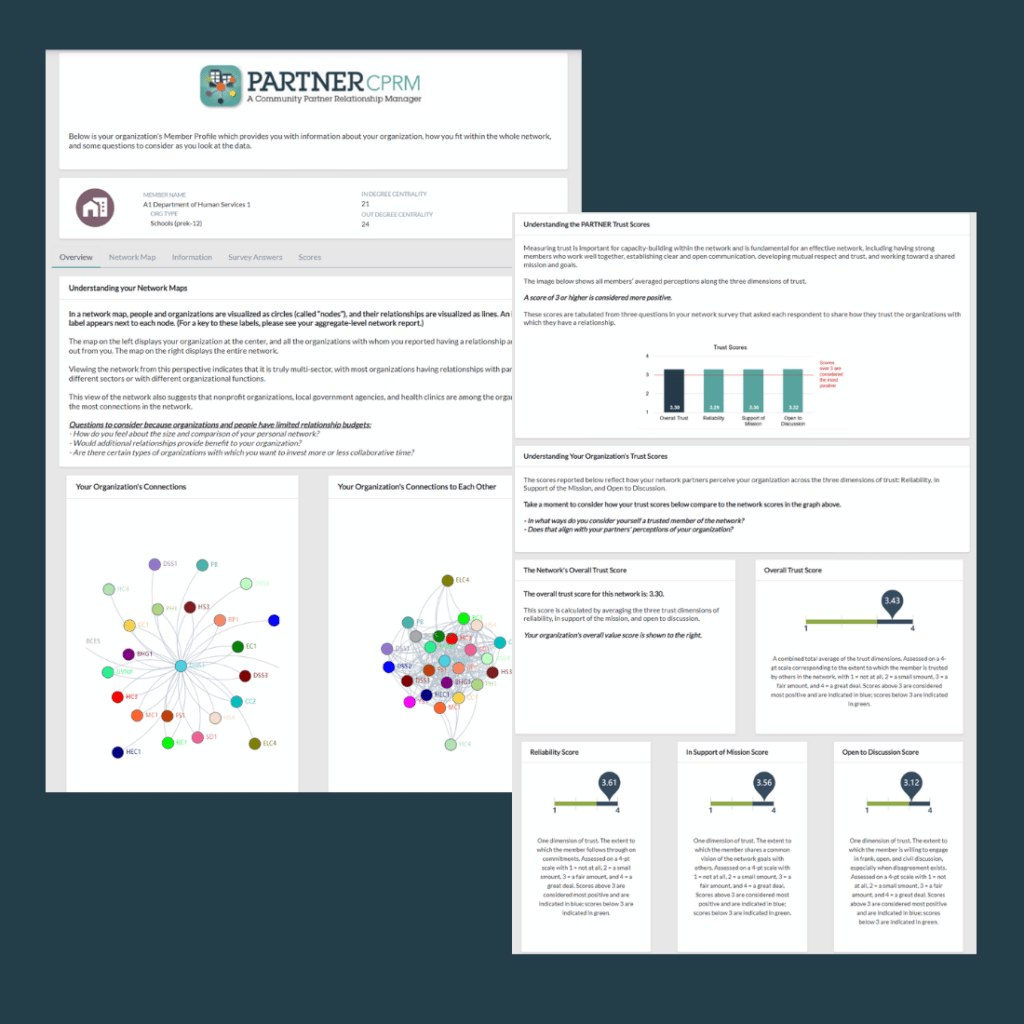
Learn More: Request a Demo!
Learn more about the platform and see it for yourself by requesting a complimentary web demo with a member of our Data Science Team. We look forward to connecting and showing you more!
2 Types of Social Network Analysis: FAQ
If we have not addressed your question below, leave a comment, and we will get back to you with an answer and more information as soon as possible.
Q: What is Social Network Analysis (SNA)?
A: Social Network Analysis (SNA) is a methodological approach to identifying and analyzing the relationships and patterns among individuals, groups, or entities within a network. It focuses on how the structure of ties affects individuals and the network as a whole.
Q: What are the key differences between Ego and Whole Network Analysis?
A: Ego Network Analysis focuses on the network from the perspective of an individual node (ego) and its immediate connections (alters). It examines the direct ties and their characteristics. Whole Network Analysis, in contrast, examines all the nodes and ties within a bounded system, analyzing the overall structure and patterns within the entire network.
Q: When would you use Ego Network Analysis?
A: Ego Network Analysis is used when the research interest is on the individual level, exploring how a person’s direct social connections influence their behavior, access to resources, or information flow. It’s particularly useful in studies of personal influence, social support, and individual behavior within a network.
Q: When is Whole Network Analysis more appropriate?
A: Whole Network Analysis is suitable when the focus is on the network as a whole, understanding the structure, dynamics, and patterns of connections across the entire system. This approach is often applied in organizational studies, community analysis, and understanding large-scale social dynamics.
Q: How can SNA be applied in real-world scenarios?
A: SNA can be applied in a variety of fields including public health, for understanding how diseases spread; in business, for optimizing organizational structures and enhancing communication; in marketing, for identifying influential consumers; and in sociology, for studying social capital and community structures.
Q: What tools are used for Social Network Analysis?
A: A variety of software tools can be used for SNA, including UCINET, Gephi, Pajek, PARTNER, and NetworkX (for Python users). These tools offer capabilities for network visualization, analysis of network properties, and identification of key actors or structures within the network.
Q: What are the limitations of SNA?
A: Limitations of SNA include its potential to oversimplify complex human relationships, the challenge of defining network boundaries, and the difficulty of capturing dynamic changes in networks over time. Additionally, data collection for SNA can be resource-intensive.
Conclusion
Social Network Analysis, with its two main approaches of Ego and Whole Network Analysis, offers a nuanced understanding of social structures. Whether focusing on the individual’s position within their immediate network or analyzing the entire network’s structure and dynamics, SNA provides valuable insights into how social connections influence behaviors, decisions, and outcomes.
As our world becomes increasingly interconnected, the applications and implications of SNA continue to grow, offering essential insights for researchers, policymakers, and practitioners across fields.


